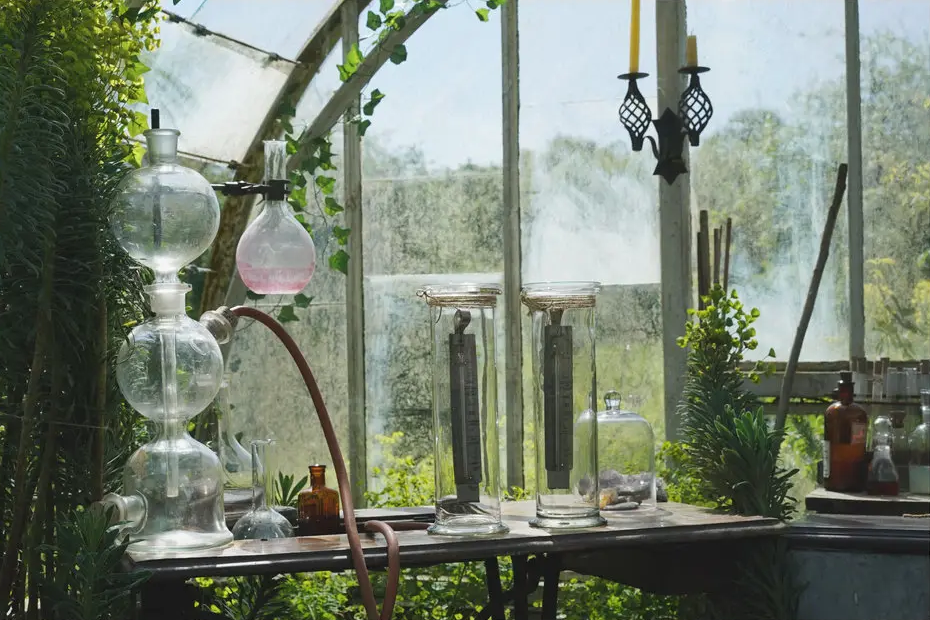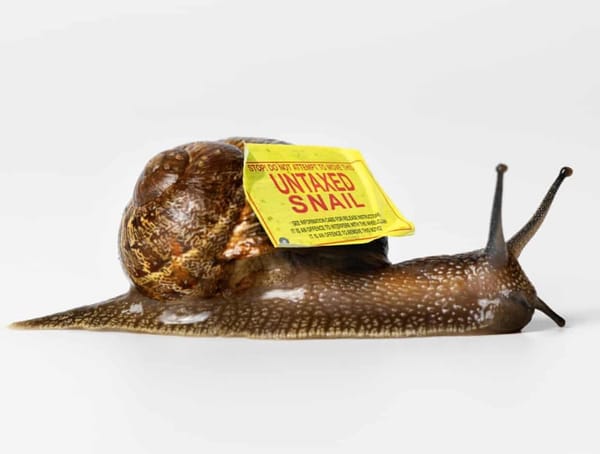She discovered the greenhouse effect 150 years ago

From the NYT: "In the 1850s, Eunice Foote, an amateur scientist, made a remarkable discovery about greenhouse gases that could have helped form the foundation of modern climate science. But the scientific paper she published that might have added her name to the pantheon of early climate scientists was quickly forgotten, and she faded into obscurity. There isn’t even a photograph of her today. Foote’s ingenious and elegant experiment involved two glass cylinders filled with various substances, including moist air and carbon dioxide. She placed a thermometer in each container, then left them in sunlight. In her 1856 paper about the experiment, “Circumstances Affecting the Heat of the Sun’s Rays,” she wrote that a cylinder with moist air became warmer than one with dry air, and a cylinder filled with carbon dioxide warmed even more. “An atmosphere of that gas would give to our earth a high temperature,” she wrote.
The last two Jewish men in Afghanistan disguised their synagogue as a kebab stand

From Wikipedia: "The country's last rabbi fled in 1988, and the last formal prayer services were held at the synagogue in 1990. In the mid-1990s, Zablon Simintov moved into the synagogue, by then Kabul's only functioning synagogue. The Taliban had come to power in 1996, and the synagogue had been deserted and left in disrepair. The Taliban considered the synagogue un-Islamic and as such, ransacked it and frequently arrested Simintov and fellow resident Yitzhak Levin. Simintov and Levin argued frequently about who was the rightful owner of the synagogue, and they lived in different wings. Each would complain to the Taliban about the other, to the point that the Taliban imprisoned both men. To disguise the synagogue from the outside, Simintov operated a kebab restaurant from the building called Balkh Bastan beginning in 2009."
The world's largest iceberg is on a collision course with a British island

From the BBC: "The world's largest iceberg is on a collision course with a remote British island. The iceberg is spinning northwards from Antarctica towards South Georgia, a rugged British territory and wildlife haven, where it could ground and smash into pieces. Countless birds and seals died on South Georgia's icy coves and beaches when past giant icebergs stopped them feeding. Around the world a group of scientists, sailors and fishermen are anxiously checking satellite pictures to monitor the daily movements of this queen of icebergs. It is known as A23a and is one of the world's oldest. It calved, or broke off, from the Filchner Ice Shelf in Antarctica in 1986 but got stuck on the seafloor and then trapped in an ocean vortex. Finally, in December, it broke free and is now on its final journey, speeding into oblivion. It once measured 3,900 sq km, but the latest satellite pictures show it is slowly decaying. It is now around 3,500 sq km."
Hi everyone! Mathew Ingram here. I am able to continue writing this newsletter in part because of your financial help and support, which you can do either through my Patreon or by upgrading your subscription to a monthly contribution. I enjoy gathering all of these links and sharing them with you, but it does take time, and your support makes it possible for me to do that. I also write a weekly newsletter of technology analysis called The Torment Nexus.
Scientist says he has solved the mysterious deaths of Russian hikers in Dyatlov Pass

From The New Yorker: "In late 1958, Dyatlov began planning an ambitious sixteen-day cross-country ski trip in the Urals, the north-south mountain range that divides western Russia from Siberia. On February 25th, students found ski tracks, and the next day they discovered the skiers’ tent above the tree line. There was no one inside. About a hundred feet downhill, the search party found footprints of eight or nine people, walking toward the tree line. Almost all the prints were of stockinged feet, some even bare. The next morning, searchers found bodies lying next to a dead fire, wearing only underwear. Krivonishchenko had blackened fingers and third-degree burns on a shin and a foot. Inside his mouth was a chunk of flesh that he had bitten off his right hand. Russians generally favor one of two theories: the skiers died because they had stumbled into an area where secret weapons were being tested; alternatively, the party was “killed by mercenaries" or attacked by a snow monster or yeti.

From Artnet: "On a summer day in 1908, Italian archaeologist Luigi Pernier unearthed what would become one of history’s most tantalizing puzzles. While excavating the ancient Minoan palace of Phaistos in Crete, Pernier came across a peculiar artifact: a clay disk roughly the size of a dinner plate, covered on both sides with a spiral of stamped symbols unlike any other ancient writing system known. The object would come to be known as the Phaistos Disk. Since its discovery over a century ago, it has been something of an obsession for many scholars. Nobody really knows who made it or if we’re even holding it right-side up, let alone what language it’s in. What makes the Phaistos Disk particularly mind-bending is its method of creation. Each of its 241 symbols was carefully pressed into the soft clay using individual stamps. The 45 different signs spiral inward from the disk’s edge on both sides, arranged in tidy little groups that closely—and tantalizingly—resemble words."
He parasails onto the wrong building so then he jumps off the roof
He’s playing gta in real life pic.twitter.com/7FlRnIO7Yn
— Out of Context Human Race (@NoContextHumans) February 9, 2025
Acknowledgements: I find a lot of these links myself, but I also get some from other newsletters that I rely on as "serendipity engines," such as The Morning News from Rosecrans Baldwin and Andrew Womack, Jodi Ettenberg's Curious About Everything, Dan Lewis's Now I Know, Robert Cottrell and Caroline Crampton's The Browser, Clive Thompson's Linkfest, Noah Brier and Colin Nagy's Why Is This Interesting, Maria Popova's The Marginalian, Sheehan Quirke AKA The Cultural Tutor, the Smithsonian magazine, and JSTOR Daily. If you come across something interesting that you think should be included here, please feel free to email me at mathew @ mathewingram dot com



